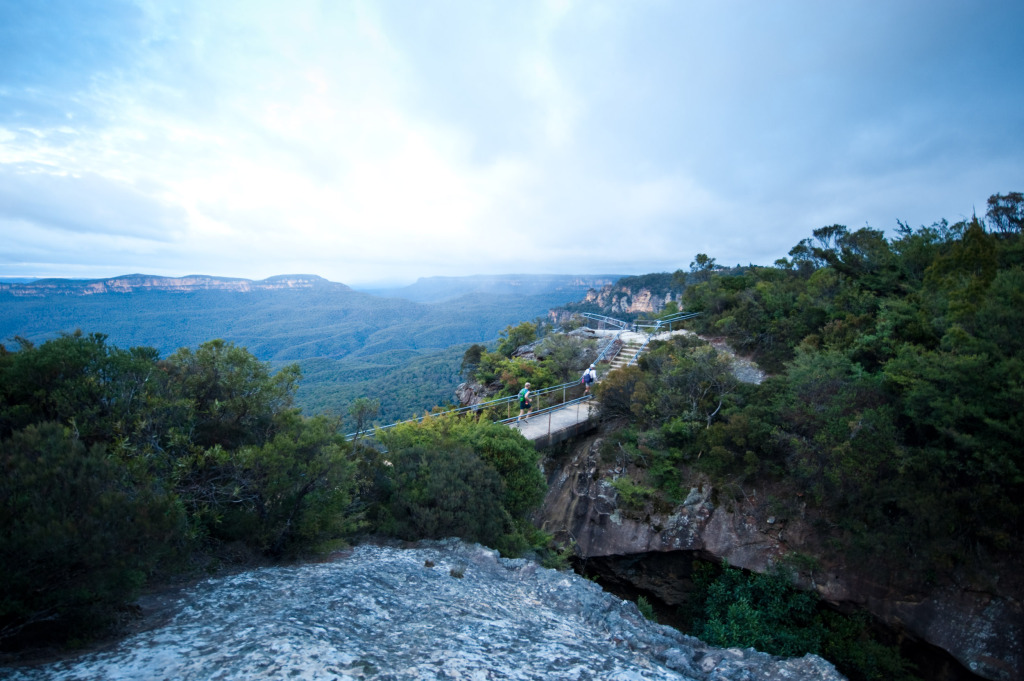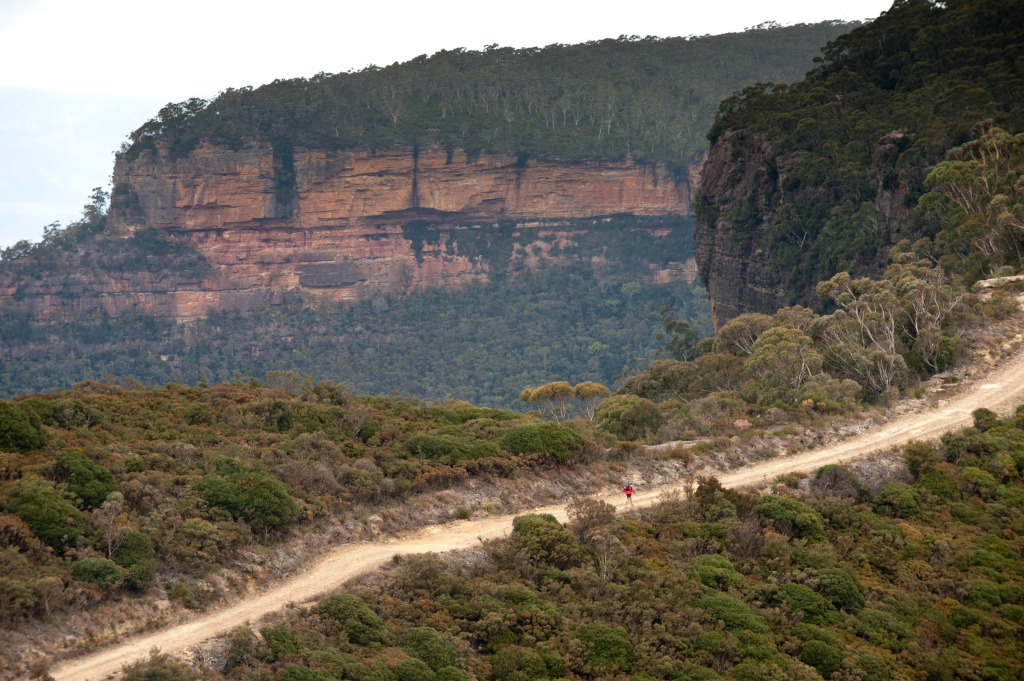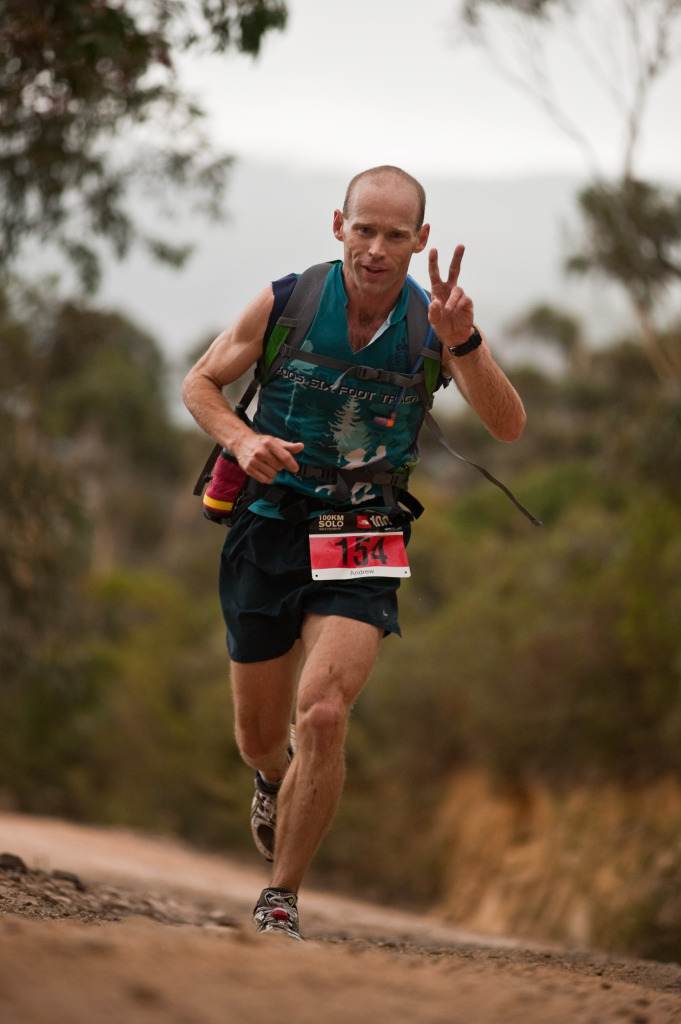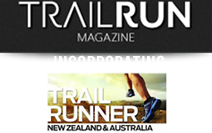Dan Lewis previews this year’s The North Face 100, with an A-Z guide of the iconic 100km Blue Mountains trail running event (May 15-17) that attracts elite athletes from around the world. IMAGES: Incite Images / Mark Watson
 A is for AROC Sport, the organisation that runs TNF100 each year and started it in 2008.
A is for AROC Sport, the organisation that runs TNF100 each year and started it in 2008.
B is for Kilian Jornet Burgada, the freakish Spanish trail runner who won the 2011 TNF100. B is also for the cherished belt buckles awarded to those who finish in under 20 hours.
C is for the camaraderie of the runners, climbs (more than 4000m), checkpoints (five) and competitors (a thousand in the 100km race). C is also for cut-off time. If you haven’t finished by 10.53am on the Sunday your race is over.
D is for Brendan Davies, a Blue Mountains runner who won the 2013 TNF100 in a time of 9:16:12 – still the record. He’s aiming for another win this year.
E is for the incredible emotion runners display when they cross the finish line. E is for the eighth running of TNF100. And E is for employment. TNF100 is a big employer of the Blue Mountains outdoor guiding fraternity for their first aid skills.
F is for TNF100’s companion 50km race. It’s for Furber Steps, the first big descent into the Jamison Valley and the last agonising climb out of the valley (860 steps, 200m of vertical gain) just before the finish line.
G is for Tasmania’s Stu Gibson, last year’s winner. He won’t be in this year’s race unfortunately, he’ll be working in Antarctica. G is also for the Golden Stairs, the race’s first big climb out of the Jamison Valley. G is also for the Gundungurra people, the traditional owners of the land across which TNF100 is raced. Gundungurra man David King has provided a great welcome to the runners every year since 2008.
H is for hotel rooms. It’s impossible to get a last-minute one in Katoomba on the weekend of the race due to the hundreds of runners and supporters who come to town.
I is for Ironpot Ridge, a section of the course with spectacular bush views that isn’t usually open to the public.
J is for the journalists like Dan Lewis (ex-The Sydney Morning Herald) who will keep you informed about TNF100 on its Facebook page and website.
K is for Katoomba’s KCC convention centre where the expo (where you can buy cool outdoor gear), registration and race briefings will be held on the Friday. K is also for the Injinji 1km-4-Kids race on the Sunday morning.
 L is for Andrew Lee (right), a Blue Mountains runner who won his first TNF100 in 2009 and famously tied with Stu Gibson to take out the 2010 race. L is also for Tom Landon-Smith, TNF100 race director and a former member of the Australian cross-country ski team.
L is for Andrew Lee (right), a Blue Mountains runner who won his first TNF100 in 2009 and famously tied with Stu Gibson to take out the 2010 race. L is also for Tom Landon-Smith, TNF100 race director and a former member of the Australian cross-country ski team.
M is for the Megalong Valley, where the race follows the historic Six Foot Track that connects Katoomba and Jenolan Caves.
N is for the first ever National Trail Running Conference that’s being held in the Blue Mountains to coincide with this year’s TNF100. N is also for the National Parks and Wildlife Service, a key supporter of the race.
O is for overseas runners from 35 countries This year’s elite field includes athletes from New Zealand, Japan, France, Canada, Britain, Lithuania, Spain, South Africa, Ireland, China and the US. The world’s top-rated trail runner in 2014, Francois D’Haene of France, will be out to see if he can do better than his second place in 2011.
P is for Petzl, one of the race’s sponsors. Their head torches come in very handy for night running. P is also for prize money – $1500 to the male and female winners – that will be handed out at the presentation at 10am on the Sunday. And P is for Nuria Picas, the female winner of last year’s TNF100 in a new record time of 10:57:46.
Q is for the old Queen Victoria Hospital on Kings Tableland, Wentworth Falls – the last checkpoint (78km mark) before the finish line.
R is for race rules – everything from no iPod use at checkpoints to no faeces on the track.
S is for Scenic World in Katoomba, where the race starts and finishes. S is also for the race start, 6.20am on the Saturday. And S is for spectators. Scenic World is a great place for spectators to cheer on the runners.
T is for Tarros Ladders, a spectacular climb down the cliffs runners must make from the heights of Narrow Neck to the grassy oasis of Dunphy’s Camp, named after the legendary bush walker and naturalist Myles Dunphy. And T is for outdoor clothing company The North Face, which has sponsored the race since 2008. T is for Blue Mountains adventurer Lucas Trihey, who co-ordinates the race’s first aid team.
U is for the Ultra-Trail World Tour, a prestigious international trail running series which TNF100 is an important part of.
V is for high-visibility vest, part of the mandatory gear runners must carry with them to stay safe. The mandatory gear list also includes thermals, a waterproof jacket, beanie, gloves, compass, compression bandage, whistle, space blanket, maps, matches and mobile phone.
W is for the women like three-times winner Sydney-based Beth Cardelli who are going to make the female section of this year’s TNF100 so competitive.
X is for x-factor, that special something that has made TNF100 Australia’s greatest ultra-endurance trail running event.
Y is for YouTube, where you’ll find some very cool TNF100 videos.
Z is for zen, that meditative state of mind trail runners seek as they compete in TNF100.
Check out www.thenorthface100.com.au and follow the action.








